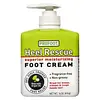What's inside
What's inside
 Key Ingredients
Key Ingredients

 Benefits
Benefits

 Concerns
Concerns

 Ingredients Side-by-side
Ingredients Side-by-side

Water
Skin ConditioningStearic Acid
CleansingGlycerin
HumectantParaffinum Liquidum
EmollientCetyl Alcohol
EmollientC13-14 Isoparaffin
EmollientArgania Spinosa Kernel Oil
EmollientTriethanolamine
BufferingPolysorbate 20
EmulsifyingLaureth-7
EmulsifyingTitanium Dioxide
Cosmetic ColorantSodium Bicarbonate
AbrasiveSodium Benzoate
MaskingSqualene
EmollientSodium PCA
HumectantSilk Amino Acids
HumectantAscorbic Acid Polypeptide
AntioxidantUbiquinone
AntioxidantPolyacrylamide
Propylene Glycol
HumectantDMDM Hydantoin
PreservativeMethylparaben
PreservativePropylparaben
PreservativeWater, Stearic Acid, Glycerin, Paraffinum Liquidum, Cetyl Alcohol, C13-14 Isoparaffin, Argania Spinosa Kernel Oil, Triethanolamine, Polysorbate 20, Laureth-7, Titanium Dioxide, Sodium Bicarbonate, Sodium Benzoate, Squalene, Sodium PCA, Silk Amino Acids, Ascorbic Acid Polypeptide, Ubiquinone, Polyacrylamide, Propylene Glycol, DMDM Hydantoin, Methylparaben, Propylparaben
Water
Skin ConditioningGlycerin
HumectantParaffinum Liquidum
EmollientGlyceryl Stearate Se
EmulsifyingCetearyl Alcohol
EmollientNiacinamide
SmoothingCetyl Alcohol
EmollientAmmonium Lactate
BufferingTriethanolamine
BufferingSalicylic Acid
MaskingBehentrimonium Methosulfate
PEG-100 Stearate
Phenoxyethanol
PreservativeDimethicone
EmollientSodium Lauroyl Lactylate
EmulsifyingDisodium EDTA
Ceramide NP
Skin ConditioningCeramide AP
Skin ConditioningPhytosphingosine
Skin ConditioningCholesterol
EmollientXanthan Gum
EmulsifyingCarbomer
Emulsion StabilisingEthylhexylglycerin
Skin ConditioningSodium Hyaluronate
HumectantCeramide EOP
Skin ConditioningWater, Glycerin, Paraffinum Liquidum, Glyceryl Stearate Se, Cetearyl Alcohol, Niacinamide, Cetyl Alcohol, Ammonium Lactate, Triethanolamine, Salicylic Acid, Behentrimonium Methosulfate, PEG-100 Stearate, Phenoxyethanol, Dimethicone, Sodium Lauroyl Lactylate, Disodium EDTA, Ceramide NP, Ceramide AP, Phytosphingosine, Cholesterol, Xanthan Gum, Carbomer, Ethylhexylglycerin, Sodium Hyaluronate, Ceramide EOP
 Reviews
Reviews

Ingredients Explained
These ingredients are found in both products.
Ingredients higher up in an ingredient list are typically present in a larger amount.
Cetyl Alcohol is a fatty alcohol. Fatty Alcohols are most often used as an emollient or to thicken a product.
Its main roles are:
Though it has "alcohol" in the name, it is not related to denatured alcohol or ethyl alcohol.
The FDA allows products labeled "alcohol-free" to have fatty alcohols.
Learn more about Cetyl AlcoholGlycerin is already naturally found in your skin. It helps moisturize and protect your skin.
A study from 2016 found glycerin to be more effective as a humectant than AHAs and hyaluronic acid.
As a humectant, it helps the skin stay hydrated by pulling moisture to your skin. The low molecular weight of glycerin allows it to pull moisture into the deeper layers of your skin.
Hydrated skin improves your skin barrier; Your skin barrier helps protect against irritants and bacteria.
Glycerin has also been found to have antimicrobial and antiviral properties. Due to these properties, glycerin is often used in wound and burn treatments.
In cosmetics, glycerin is usually derived from plants such as soybean or palm. However, it can also be sourced from animals, such as tallow or animal fat.
This ingredient is organic, colorless, odorless, and non-toxic.
Glycerin is the name for this ingredient in American English. British English uses Glycerol/Glycerine.
Learn more about GlycerinParaffinum Liquidum is also known as liquid paraffin. It is a type of highly refined mineral oil.
Like other oils, Paraffinum Liquidum has emollient properties. Emollients help soothe and soften the skin. By creating a barrier to trap moisture within, emollients help keep your skin hydrated.
Paraffinum Liquidum does not irritate the skin and is non-comedogenic.
Learn more about Paraffinum LiquidumTriethanolamine is an emulsifier and pH adjuster. It is created using ethylene oxide and ammonia. This gives Triethanolamine a nitrogen core and a similar scent to ammonia.
As an emulsifier, it prevents ingredients from separating and enhances texture by adding volume to a product.
PH adjusters are common in cosmetic products. The pH of a product can affect the effectiveness of other ingredients. A product with a high pH may also irritate the skin.
Learn more about TriethanolamineWater. It's the most common cosmetic ingredient of all. You'll usually see it at the top of ingredient lists, meaning that it makes up the largest part of the product.
So why is it so popular? Water most often acts as a solvent - this means that it helps dissolve other ingredients into the formulation.
You'll also recognize water as that liquid we all need to stay alive. If you see this, drink a glass of water. Stay hydrated!
Learn more about Water